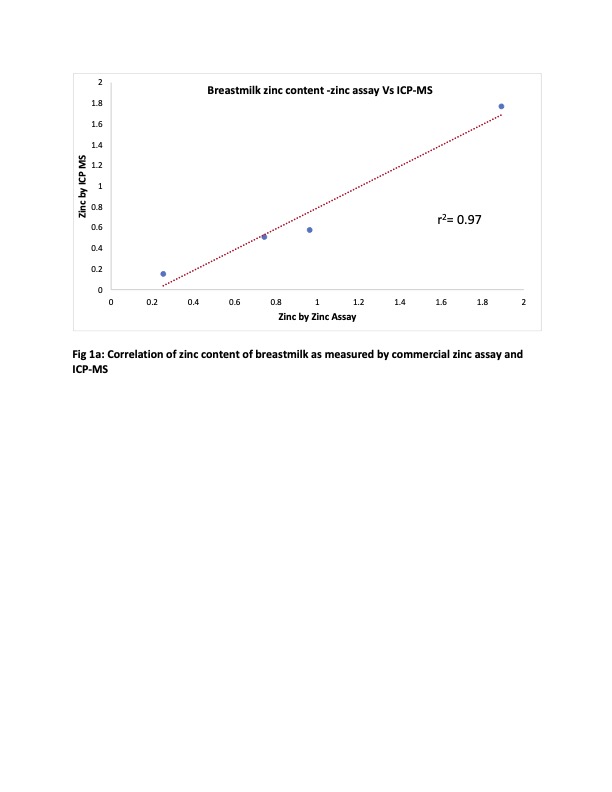Neonatal Fetal Nutrition & Metabolism
Neonatal Fetal Nutrition & Metabolism 2: Neonatal Nutrition, Growth, and Outcomes
312 - Usability of commercially available zinc assay compared to ICP-MS to determine zinc content
Publication Number: 312.129
- MY
Miheret S. Yitayew, MD, MPH (she/her/hers)
Assistant Professor
Children's Hospital of Richmond at VCU
Richmond, Virginia, United States
Presenting Author(s)
Background:
Zinc is an essential nutrient critical for biochemical and functional cellular differentiation, vital organ growth, brain development and immunity. Accurate measurement of serum zinc as well as zinc content of milk in newborn diet is important for research to assess adequate nutritional provision of zinc. This is possible with inductively coupled plasma mass spectrometry (ICP-MS). Commercially available zinc assays have become available for quantifying zinc content of serum but information on its’ potential performance compared to ICP-MS is sparse.
Objective:
To compare the performance of a commercially available zinc assay (kit- MAK032, Sigma-Aldrich, St Louis. MO) with ICP-MS in measuring zinc content of breast milk and cord blood.
Design/Methods:
Five expressed breast milk and donor milk samples from a national donor milk bank and 5 cord blood serum samples from an IRB approved previous study were analyzed. The day of life at which the milk samples were collected was documented. Samples were stored at -80 degree Celsius. Using commercially available zinc assay samples were prepared per manufacturer recommendations and same test samples assessed for zinc content by ICP-MS. Pearson’s correlation was used to assess the correlation between values of the commercial zinc assay compared to the ICP-MS.
Results: The average GA of delivery for mothers of milk sample was 27 ± SD 0.7 weeks and the average day of life the milk samples were collected was 8 ± SD 1.5 days. The average zinc content of milk was 0.9 (range 0.67, 0.96) mg/dl and 0.69 (range 0.44, 0.58) mg/dl when measured by commercial assay and ICP-MS respectively. There was an excellent correlation of milk zinc content by commercial assay and ICP MS (r= 0.97, p=0.017). The average gestational age of cord serum samples was 35 ± SD 3.6 weeks. Cord blood serum zinc content by commercial compared to ICP-MS ranged from average of 0.18 ± SD 0.072mg/dl and 0.14± SD 0.024 mg/dl respectively. Commercial and ICP-MS correlation of cord serum zinc was poor (r=0.3, p=0.69). Results of both breast milk zinc content and cord serum zinc as measured by ICP-MS were comparable with previous levels reported in literature.
Conclusion(s):
These results identify excellent correlation between commercial assay and ICP-MS in determination of human milk zinc content but limitations in the utility of commercial zinc assays as compared to ICP-MS in determination of adequate zinc levels for research suggesting caution be used in the independent analysis of this commercial zinc assay for serum zinc adequate assessment. 
.jpg)
